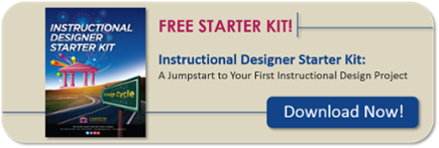Photo by: Hanns Adrian Böhme via Unsplash
There is a common misconception in training about whether knowledge can be task-based. I hear it all the time in my workshops, “I teach knowledge and not task-based content so how can I do a task-analysis?” The confusion lies with the thought that task-based needs to be “hands-on.” This is not always the case. Often the knowledge being taught is conceptual skills which can be broken down into a task-based procedure.
The definition of training is “to provide knowledge (topic) and skills (tasks) to improve performance on the current job.” We need to identify if the content we are providing is knowledge or skill or a little of both. Content will either be a task or a topic or a combination of both.
Tasks can be broken down into three major categories: technical (hands-on), interpersonal (behaviors), and conceptual (thought processes) whereas content that is topic-based is knowledge or information required to perform a task. To structure this content, you would use a topic analysis. Remember, this information does not show what the learners will do back on the job. You should conduct a topic analysis when pre-requisite information is required to perform the task (e.g. polices, definition of terms, etc.) and/or new or updated information is needed for a task that is already being performed to standard.
If you have determined the knowledge is conceptual content (e.g. apply common law, analyze market trends, identify unethical procedures, respond to traffic signs, etc.), versus information or knowledge, then it can be broken down into task-based content. To do this, when working with a subject-matter expert (SME) or researching the content, identify the performable actions. Usually conceptual content does not have a logical or sequential flow like a technical task does. It may not have a clear first step, nor will the first step always need to be completed when performing the task.
In the conceptual “Respond to Traffic Signs” example below, these are the guidelines or procedures to follow when driving a vehicle. However, a driver may not always need to respond to every sign. These are the guidelines that should be followed based on the specific situation and signs encountered.
- Respond to Traffic Signs.
1.1 Respond to regulatory signs.
1.1.1 Stop vehicle when you see a stop sign.
1.1.2 Give right-of-way when you see a yield sign.
1.1.3 Limit speed to that shown when you see a speed limit sign.
2.1 Respond to turn signs.
1.2.1 Proceed straight through when you see a straight arrow.
1.2.2 Turn right when you see a right turn arrow.
1.2.3 Turn left when you see a left turn arrow.
It is important to identify if the content is truly a topic (knowledge or information) or if it is conceptual-based content that can be taught as a task.
For simple, yet powerful tools and resources designed to ensure your courses are highly interactive, engaging, and lively, check out the Instructional Design for New Designers workshop.

